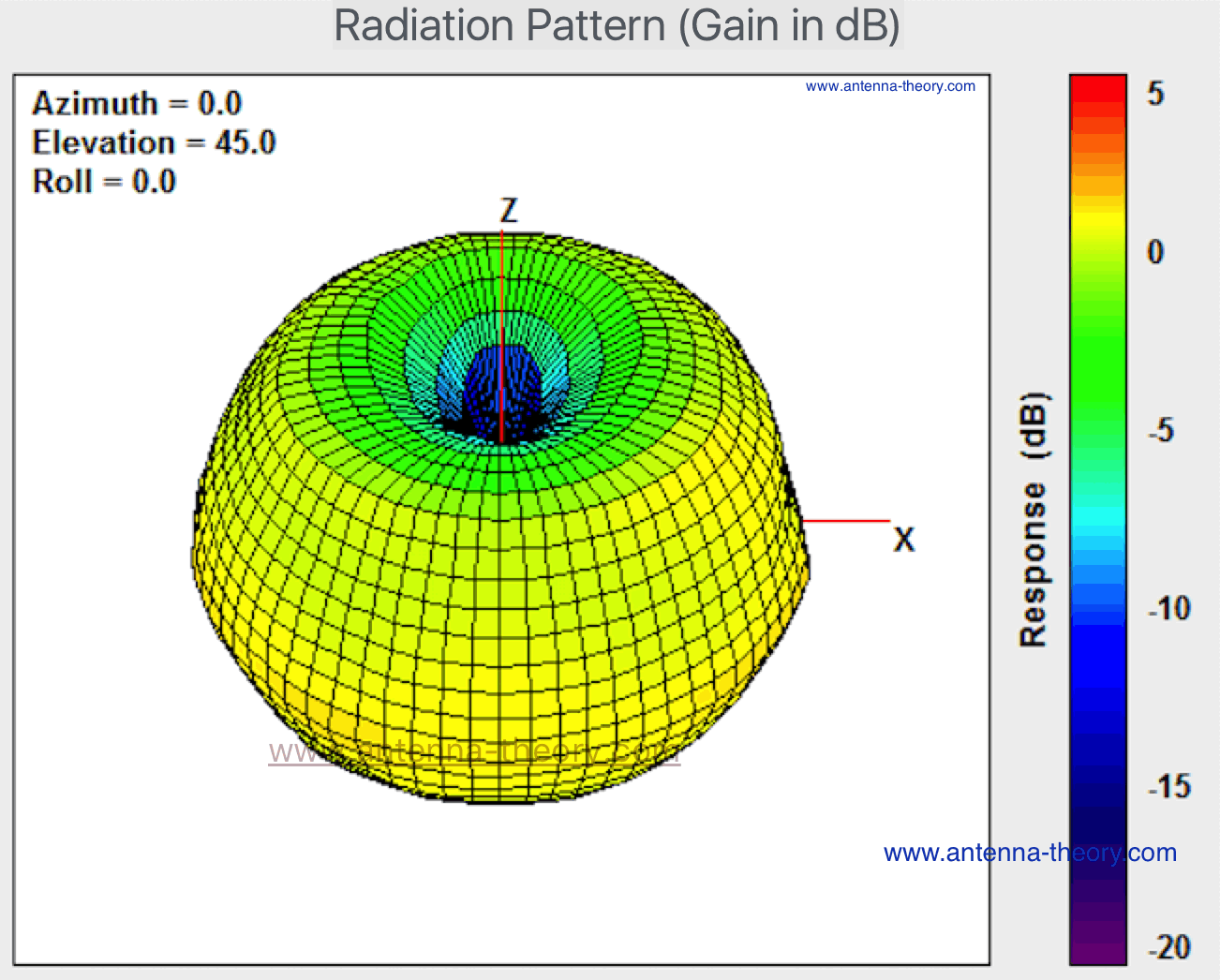|
On this page, we'll introduce another fundamental antenna parameter: antenna gain.
Antenna Gain
The term Antenna Gain describes how much power is transmitted in the direction of peak radiation to
that of an isotropic source. Antenna gain
is more commonly quoted than
directivity
in an antenna's specification sheet
because it takes into account the actual losses that occur.
A transmitting antenna with a gain of 3 dB means that the power received far from the antenna will be 3 dB higher (twice as much)
than what would be received from a lossless isotropic antenna with the same input power. Note that a lossless
antenna would be an antenna with an
antenna efficiency of 0 dB (or 100%).
Similarly,
a receive antenna with a gain of 3 dB in a particular direction would receive 3 dB more power than
a lossless isotropic antenna.
Antenna Gain is sometimes discussed as a function of angle. In this case, we are essentially
plotting the
radiation pattern,
where the units (or magnitude of the pattern) are measured in antenna gain. An example of
the radiation pattern plotted in terms of gain is shown in Figure 1:

Figure 1. Example Gain Pattern for an Antenna.
However, more often a single number is quoted the gain
is the 'peak gain' over all directions. Antenna Gain (G) can be related to
directivity (D)
and antenna efficiency by:
|  |
[Equation 1] |
The gain of a real antenna can be as high as 40-50 dB for very large dish antennas (although
this is rare). Directivity can be as low as 1.76 dB for a real antenna (example:
short dipole antenna),
but can never theoretically be
less than 0 dB. However, the peak
gain of an antenna can be arbitrarily low because of losses or low efficiency.
Electrically small antennas (small relative
to the wavelength of the frequency that the antenna operates at)
can be very inefficient, with antenna gains lower than -10 dB (even without accounting for impedance mismatch loss).
Is a High Gain Antenna Advantageous?
Often manufacturers of antennas (be they wifi antennas, gps antennas, or tv antennas) specify the
antenna gain. For instance, manufacturers of wifi antennas may market the wifi antenna as a "high gain antenna",
which is more expensive than a similar low gain antenna. The question is: do we want high gain?
The answer is: it depends. If you know exactly where your desired signal is coming from, you would like to
have maximum gain (towards the desired) direction. However, if you don't know where the desired
signal will be coming from, it is better to have a low gain antenna. A couple examples will make this
clear.
{ Example #1 } - TV Antennas. If you mount a TV antenna on your roof, and know the tv broadcast antennas
are to the south (for example, on some hill south of the city), then it is preferred to have a high gain
antenna. Antennas with gain of at least 12-15 dB are preferred.
{ Example #2 } - GPS (Global Positioning System). GPS antennas for mobile devices are receive only. The job
of the gps antenna is to triangulate your position by measuring the received signal from multiple gps satellites,
which are all in different directions relative to the receive antenna. For this case, a very highly directional
antenna would not be preferred.
{ Example #3 } - Mobile Cellular Antennas. The cellular antenna on your smartphone communicates with a single
cellular network tower. However, the cellular antenna can be held in any orientation, and can be in any position
relative to the network tower. Hence, for your mobile device, it is preferred to have a low gain
antenna.
A note on Units for Antenna Gain
If you look at the specification sheet for an antenna, you will typically see units for
antenna gain listed in dB, dBi or dBd. I define these terms below:
dB - decibels, as we have been discussing. 10 dB means 10 times the energy relative to an isotropic antenna in
the peak direction of radiation.
dBi - "decibels relative to an isotropic antenna". This is the same as dB as we have been using it. 3 dBi
means twice (2x) the power relative to an isotropic antenna in the peak direction.
dBd - "decibels relative to a
dipole antenna". Note that a half-wavelength
dipole antenna has a gain of 2.15 dBi. Hence, 7.85 dBd means the peak gain is 7.85 dB higher than a dipole antenna;
this is 10 dB higher than an isotropic antenna.
Next Topic: Beamwidths and Sidelobes
Antenna Basics
Antenna Tutorial (Home)
This page on antenna gain is copyrighted.
However this can be reproduced without permission from the author, I'd just prefer you cite the link if possible.
Copyright antenna-theory.com, 2009-2020.
| 

